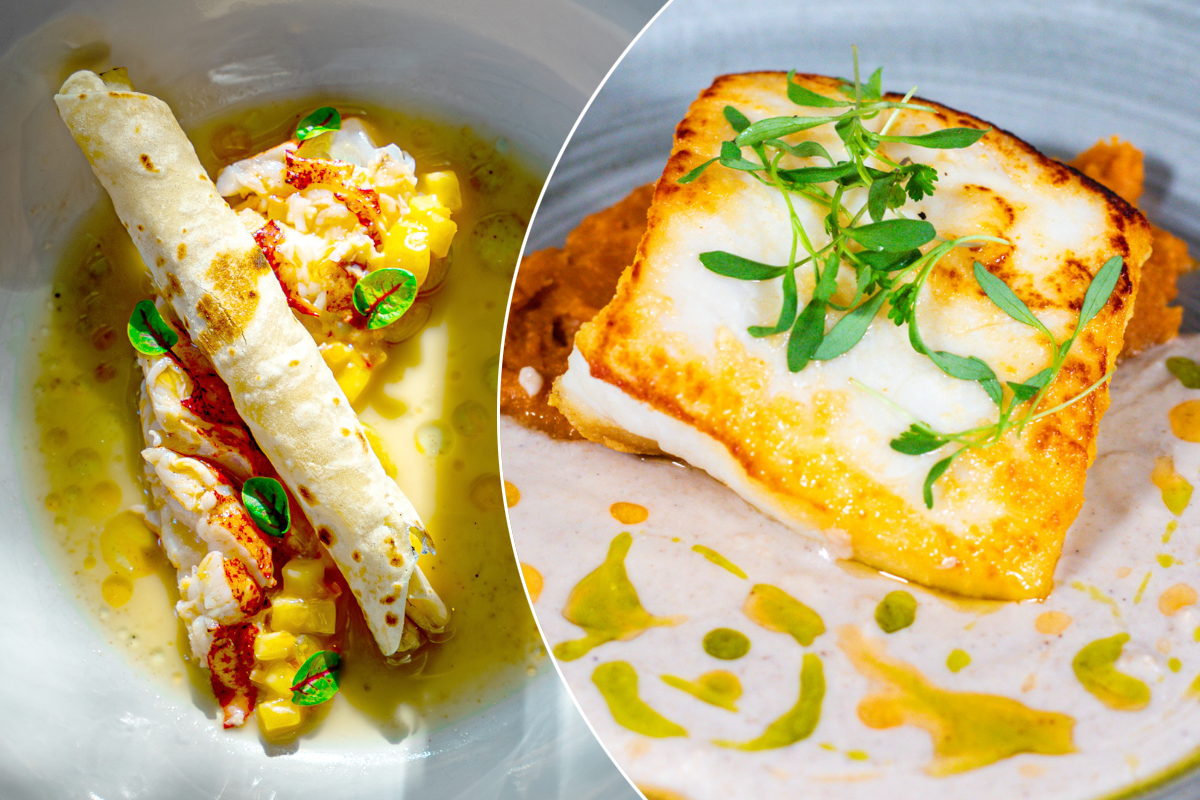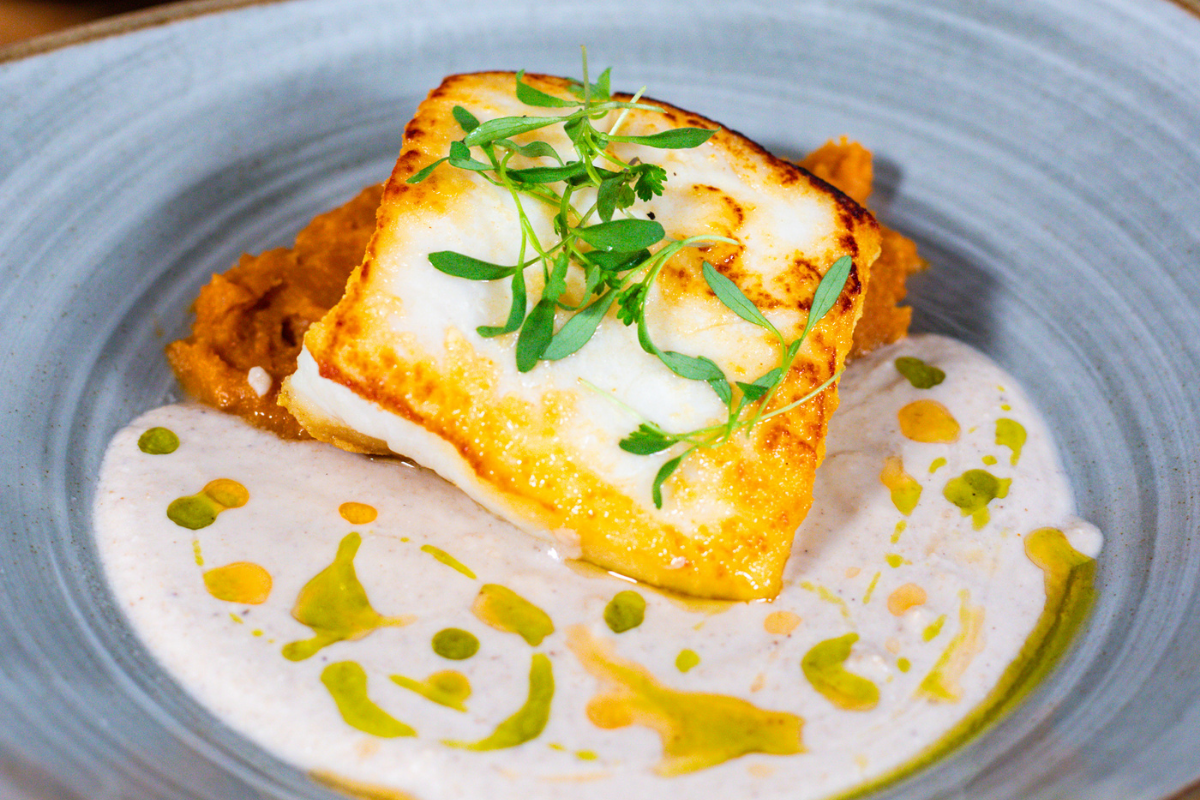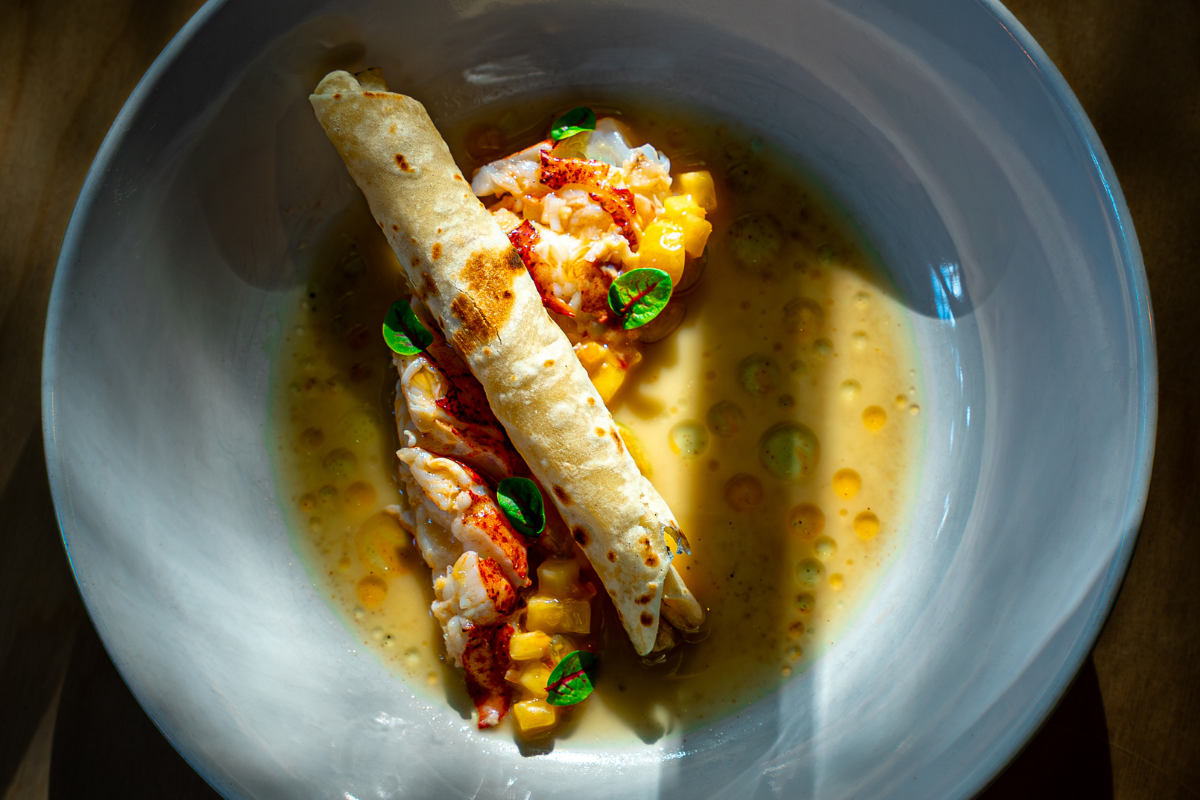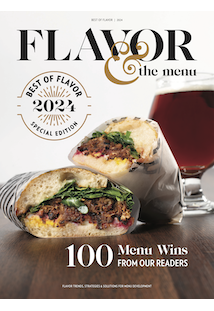
2 Saucy Mexican Seafood Standouts
Enhancing main dishes with powerhouse sauces
2 Saucy Mexican Seafood Standouts
Enhancing main dishes with powerhouse sauces
By Flavor & The Menu
July 22, 2024
By Flavor & The Menu
July 22, 2024
As a simple ingredient that punches above its weight, sauces have the ability to steer a dish’s flavor in myriad directions, from smoky and sweet to herbaceous and zesty. Mexican cuisine boasts a variety of staple sauces, including warm, cooking sauces, like mole, adobo and the lesser-known pipian (made from squash seeds and chiles), which infuse flavor from the inside out, often bringing rich, smoky and even nutty notes. Cool finishers, including pico de gallo and the full gamut of salsas, brighten dishes through fresh ingredients.
The following dishes illustrate how sauces—whether a creative take on mole or a horchata-inspired French-style emulsion—can enliven familiar dishes. The flavor profiles differ greatly from one another, but each stays true to its Mexican roots, albeit with extra panache.
Mole: Instant Flavor Builder
 Photo Credit: Credit: Consumable Content
Photo Credit: Credit: Consumable Content A combination of white mole, habanero and green onion oils, and pineapple-sweet potato-apple purée yields a flavor profile that’s at once spicy, savory and a little bit sweet.
Spice It Up: Horchata-Infused Butter Sauce

Poaching the lobster tail in a chai-infused beurre monté harkens to horchata, which originally inspired the Lobster & Nostalgia dish.
The chef’s tasting menu at modern Mexican restaurant República in Portland, Ore., is intended to convey the exclusivity of a one-of-a-kind dining experience, inevitably consigning its standout dishes to memory rather than menu permanence. That’s most fitting for the Lobster & Nostalgia dish developed by Sabrina Quintana, sous chef, who was inspired by her childhood trips to Ensenada in Mexico’s Baja California. The dish calls back to those simpler times, with approachable ingredients and flavors that, when combined, create a dynamic new taste experience. The dish is an iteration of horchata served with a lobster tail poached in chai-infused beurre monté and a summer salad featuring white peaches, ground cherries and habanada peppers. It is finished with butterfly pea oil and roasted lobster shell oil and served with a rolled flour tortilla. For the duration that the dish starred as the lobster course on República’s tasting menu, it was clearly a guest favorite, chronicled for history in glowing reviews.







